Want to find out more about Dobermanns?
The DOBERMANN
Dobermann Pinschers (also known as Doberman’s with one ‘n’, Dobie or Dobe) are beautiful, loving, regal dogs. They are often described as being very loyal and protective over the ones they love and that has certainly been my experience of them. From the ones we’ve had, they’ve also been very loving, totally goofy and major ‘oafs’ (definitely ‘bull in a China shop’ vibes!). Also, super intelligent, often mischievous and of course, boundless energy!
Dobermanns are often better known for their large, fast, muscular, powerful bodies, keen senses and intelligence which has made them a perfect breed for the military, police/security work, guard dogs and so on. They are naturally very alert, so they are the perfect dog for this type of work and rank highly as one of the world’s best protection dogs. BUT, because they are good for this type of work, they’ve often gotten a bad reputation (not helped by what you see in films or on the TV) and I personally think it’s often an unfair depiction of them, as they can be such amazing family pets too!
Dobermanns can make the most wonderful dogs and companions for families and that’s why we’ve set up this membership… to celebrate our Dobermanns and to give you as much information and guidance as possible, to make sure you know what’s involved with owning one of these beautiful animals and how to manage them, so they grow up to be an integral part of the family.
Over the years we’ve had Dobermann’s, we’ve learnt sooo much and we wanted to share this with you and build a community where you’ve not only got all the information you need at your fingertips, but also a place where we can celebrate our beloved Dobermann’s, meet other Dobermann owners, share funny stories and lovingly remember those that have passed.
We’ve done all the research so you don’t have to!
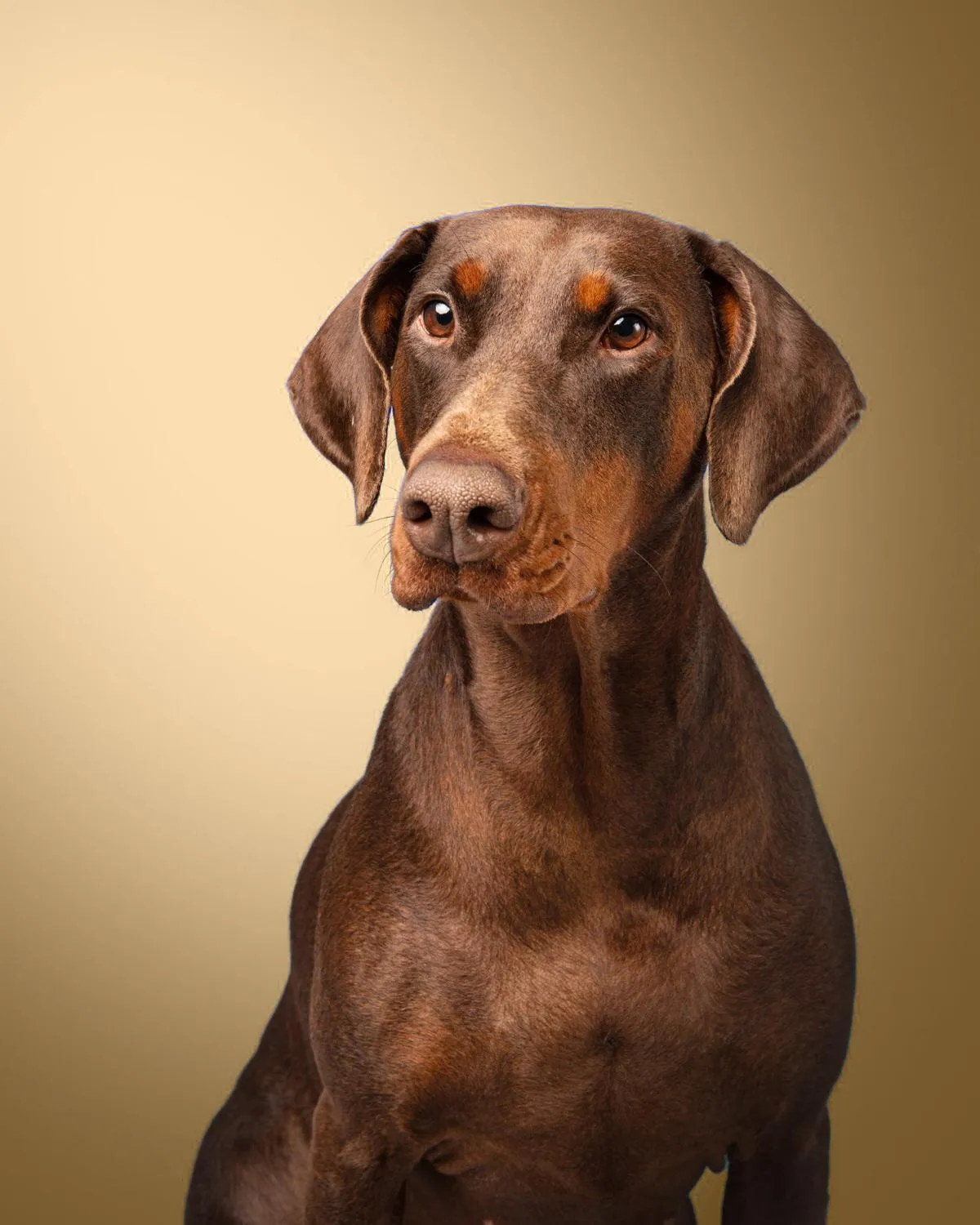

Breed Overview
The Dobermann, often referred to as a "Dobie" or "Dobe," is a medium to large-sized breed known for its intelligence, loyalty, and sleek, muscular appearance.
Originating in Germany in the late 19th century, these dogs were initially bred for protection and guard duties.
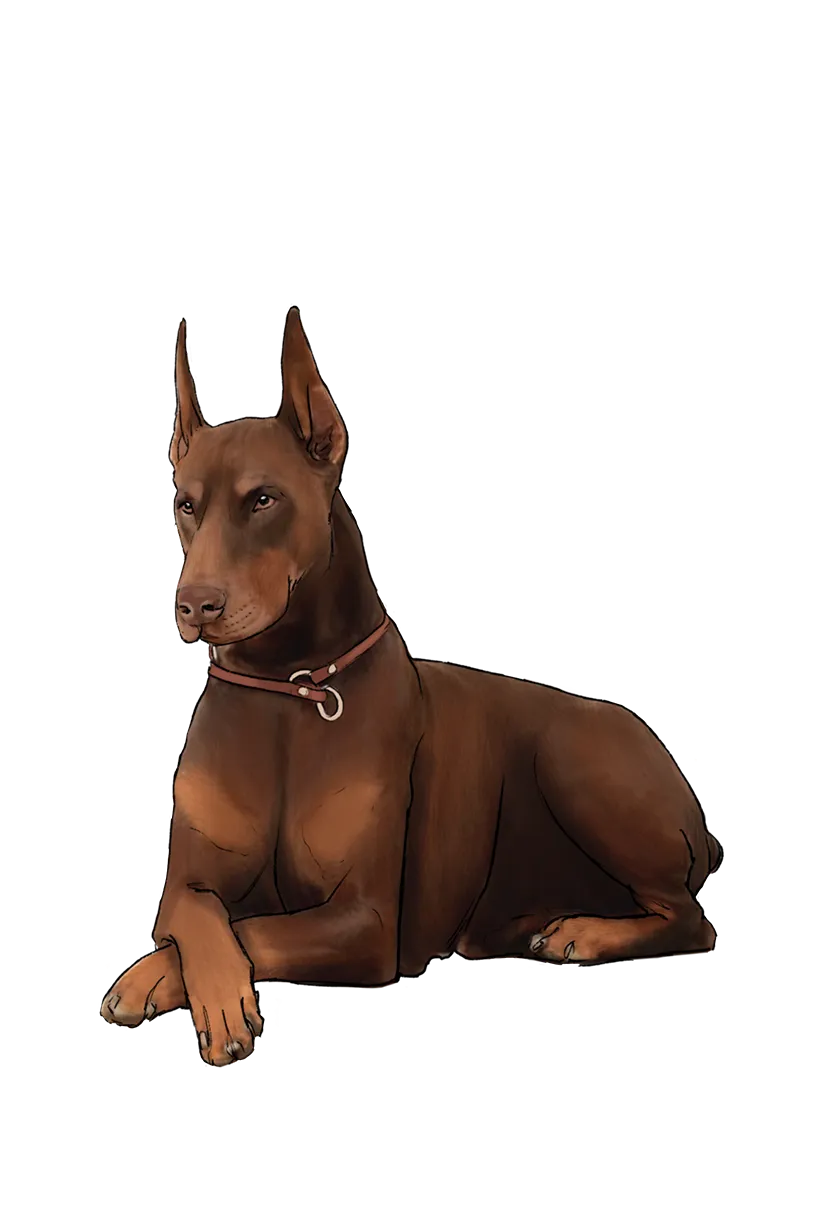
Physical Characteristics:
Dobermanns are well-muscled dogs with a compact and square build. They have a short, smooth coat that comes in various colours, including black and tan, red and rust, blue and rust, and fawn and rust.
Their ears are naturally floppy although some countries permit cropping.
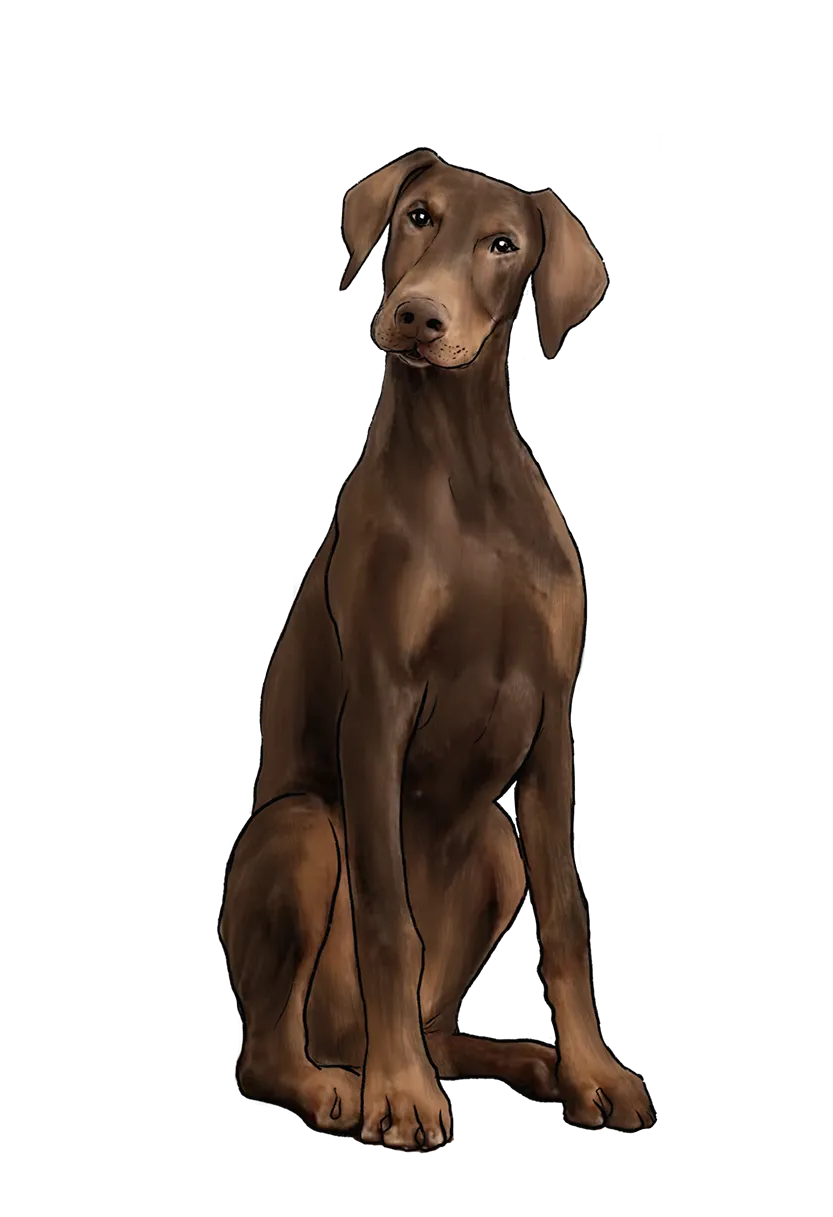
Temperament:
Known for their loyalty and protective instincts, Dobermanns are intelligent and trainable, making them versatile in various roles, including family life, police work, search & rescue, and as therapy dogs. Proper socialisation and training are crucial for a well-rounded Dobermann.
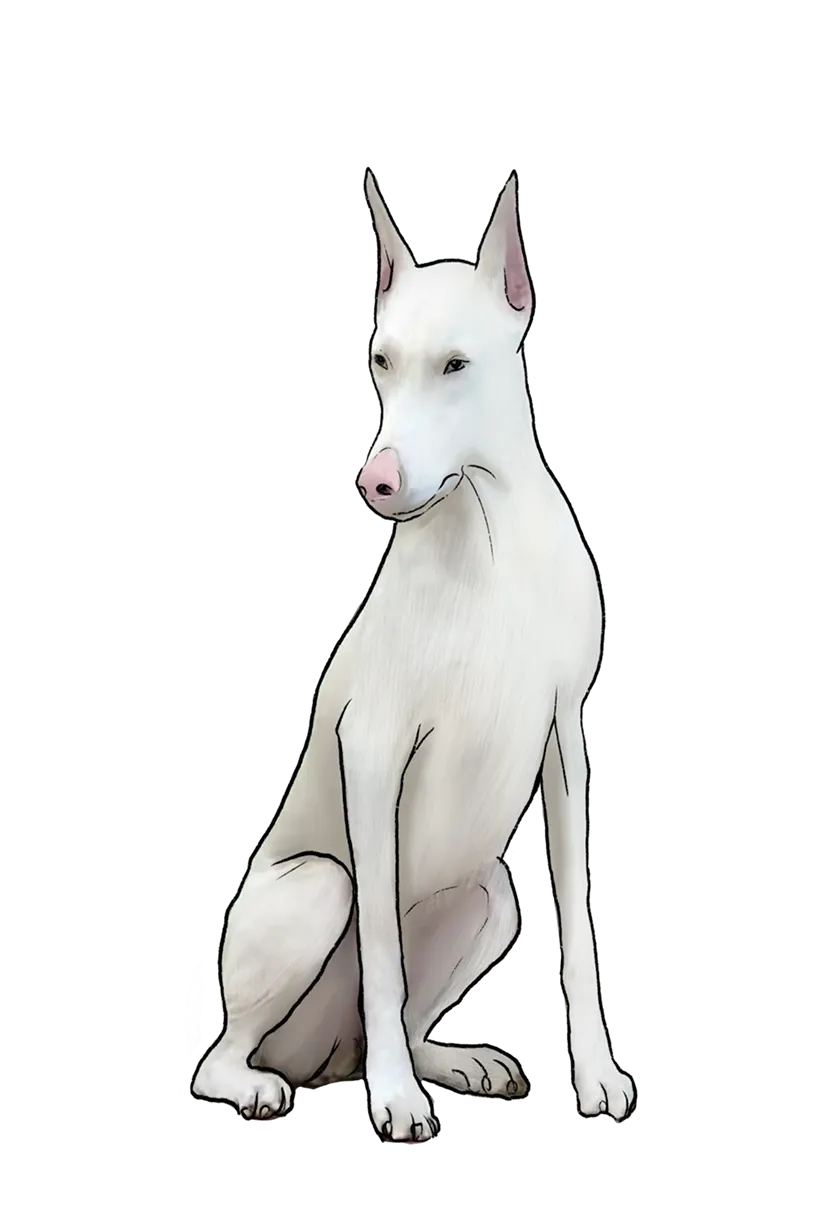
Energy Levels:
Dobermanns are active and energetic dogs that require regular exercise to maintain their physical and mental well-being. Daily walks, playtime, and mental stimulation are essential to keep them happy and prevent boredom.
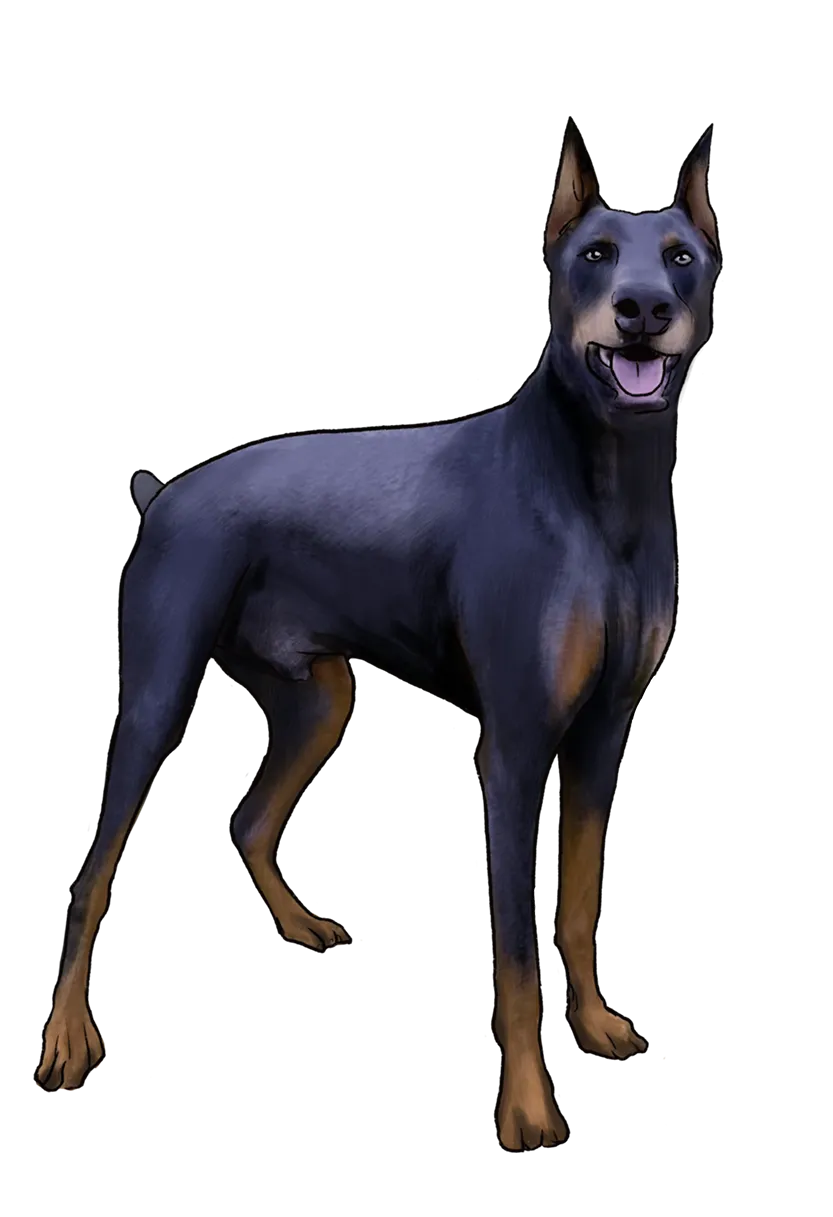
Grooming:
Their short coat requires minimal grooming, but regular brushing helps to keep their coats healthy and reduce shedding.
Routine dental care, nail trimming, and eye/ear cleaning should also be part of their grooming routine.

Health Considerations:
Like many breeds, Dobermanns can be prone to certain health issues, including hip dysplasia, dilated cardiomyopathy, and von Willebrand's disease. Responsible breeding practices and regular veterinary check-ups are essential.

Training & Socialisation:
Early training and socialisation are crucial for Dobermanns due to their intelligence & protective nature. Positive reinforcement methods work well with this breed, and they thrive on being involved in family activities.

Family Compatibility:
Dobermanns can make excellent family dogs as long as you dedicate time and effort in order to train, exercise and socialise them properly. They are protective of their family but can also be very loving, goofy and fun!
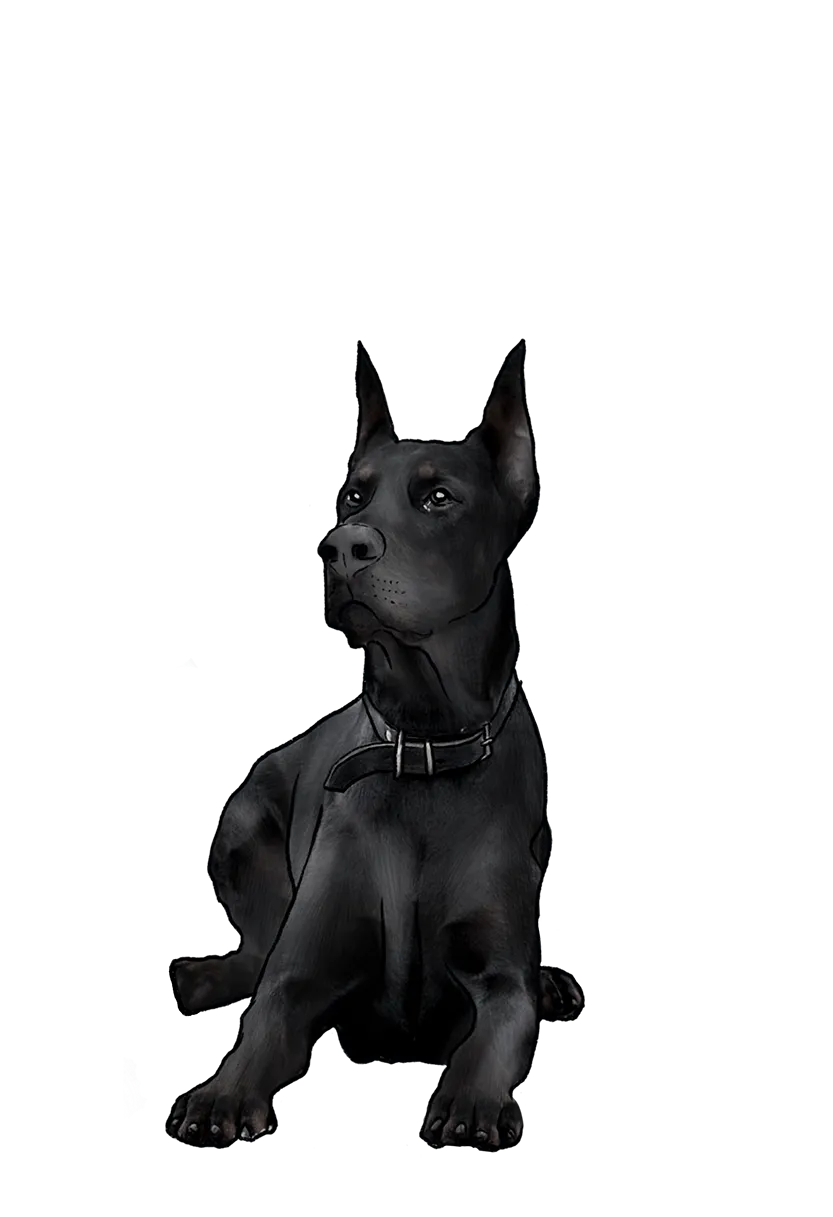
Conclusion:
In summary, Dobermanns are remarkable dogs with a rich history and versatile capabilities. Their loyalty, intelligence, and protective nature make them cherished companions for individuals and families alike.
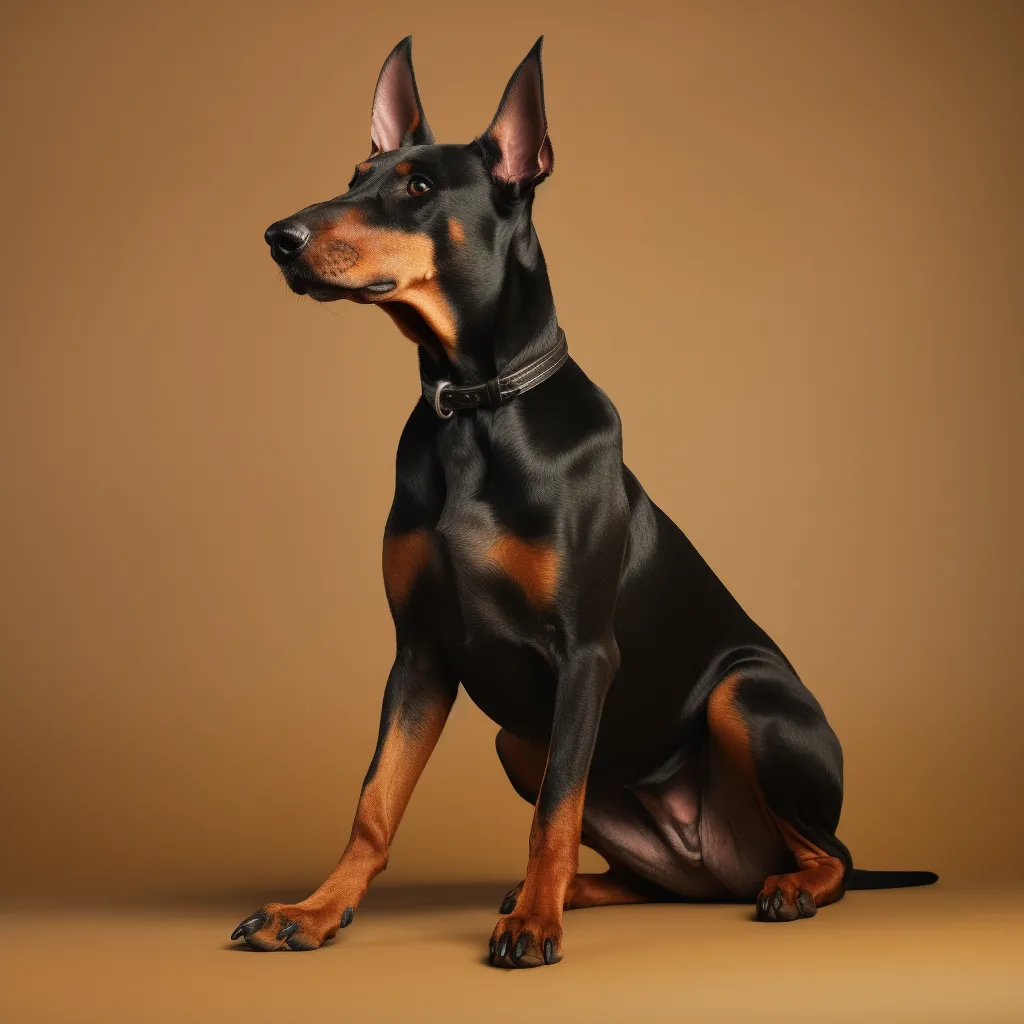
Dobermann Stats
Origin: Apolda, Germany
Developed by: Karl Friedrich Louis Dobermann in about 1890
Breed Category: Working Group
Breed Recognition: Recognised as a breed by the German
Kennel Club in 1899 and recognised by American Kennel Club (AKC) in 1908.
Size– Large
Coat– Short and smooth
Grooming– Once a week
Sheds- Yes
Exercise– 2+ hours a day (some of this might be mental stimulation!)
Health tests available: BVA/KC Hip Dysplasia Scheme, DNA test - vWD, BVA/KC/ISDS Eye Scheme
Nicknames: Dobermann, Doberman, Doberman Pinscher, Dobie, Dobe
Average Height: 68–72 cm (27–28 in) for males; 63–68 cm, (25–27 in) for females
Average Weight: 40–45 kg (88–99 lb) for males; 32–35 kg
(71–77 lb) for females
Average Life Span: 10–13 years
Join our community now and unleash the full potential of your journey with fellow dog owners!
Sign up today for exclusive access and a paw-some experience!
In the UK, it is now illegal to dock a Dobermann’s tail (effectively cut it off) or crop their ears (make them stand up/be pointy). This came into effect in England on 6th April 2007, and in Wales on 28th March 2007 (although certain breeds are exempted for working dogs and others may still have their tails docked for medical reasons). In Scotland, there is a total ban which came into effect on 30th April 2007.
Don’t forget it’s also a legal requirement to have your dog microchipped in the UK and for the dog to have a collar with an ID tag on at all times while out. The ID tag must have the dog’s name, address and phone number on it.
If you’re thinking about showing a Dobermann, you’ll find lots of information on the UK Kennel Club (KC) website and/or with the Kennel Club specific to your country.
Dobermann Puppies
Dobermanns are impressive, regal looking dogs. They are athletic, well balanced and have a lot of power and strength. Their heads are in proportion in relation to their body with a long clean-cut muzzle and a lovely long, lean neck. Their eyes are a beautiful almost shape and boast a lively (often mischievous), alert expression.
It’s really important that you really do your research when thinking of buying a Dobermann (particularly when it comes to puppies). What I’ve come to learn since having Dobermanns, is that many can suffer from certain health conditions (more on Dobermann health within the membership) and that responsible breeders try to breed these conditions out as much as is possible, which is partly why it is so important to go through a reputable breeder.
I’ve also learnt that there are definitely different ‘lines’ of Dobermanns. You’ll often hear people describe European Dobermanns and American Dobermanns and the differences between the two, but it goes further than that.
When I was doing my research into good Dobermann breeders when we got Luna, I went to a couple of Dobermann show days and it was so apparent the difference in some of the dogs. Some were quite lithe and slim and then there were some that were absolutely huge and built like a brick… well you get the picture! Some were around 30kg and then others were over 50kg!
Over time, I spoke to five or six recommended breeders, and I learnt that some Dobermanns were bred more for families and to be pets (so more focus on breeding for a softer temperament) and some were more ‘working lines’ so bred more for police work, security work and the like, so these dogs would be bigger, more drive, more muscular, potentially more fierce, stubborn etc.
I hadn’t known any of this the first time round, so it was really interesting to learn and it really showed me just how important it is to do your research when getting a Dobermann.
I also learnt that most responsible/recommended breeders will have contracts for you to sign when taking a Dobermann puppy. This will include clauses like if you need to rehome the dog, the dog goes back to the breeder, there may be restrictions on breeding from the dog and so on.
Again, we hadn’t had any of this first time round so it does really show the difference between a first class breeder who genuinely care about the pups they breed and those that are just after the money and don’t want to hear from you again once you take a puppy off their hands.
We had such a massive learning curve with our first Dobermann and we want to ensure that if you’re looking for a Dobermann puppy, you can learn from our journey and what we found. Click here to read more about our journey.
History of the Dobermann
The Dobermann is the largest of the Pinschers and takes its name from tax collector and dogcatcher, Karl Friedrich Louis Dobermann, who created the breed in 19th century Germany.
Karl was a tax collector in Apolda, Germany and it is said that he wanted a powerful and fierce looking dog to protect him in his work and act as a deterrent to potential robbers. He also wanted a dog with intelligence, speed and courage to defend and attack if required.
It’s said that he started with a foundation of Pinscher blood and then mixed Weimaraner, Greyhound, German Shepherd, Rottweiler and Manchester Terrier to create his perfect dog. By the late 19th century,
Karl had established the breed foundations; built squarely, clean outline with a wedge-shaped head and alert, keen expression. The breed was recognised by the German Kennel Club in 1899.
The Dobermann’s intelligence and trainability have been harnessed by the armed forces and police forces worldwide and are often used as guard dogs, security dogs, tracking dogs and the like (we’ve all seen the films or TV shows with fierce looking Dobermann’s on them!)
While they do make great working dogs as described above, they can also make the perfect family companions… as long as you put the work in to train them, set boundaries and stimulate them enough (through exercise and brain training).
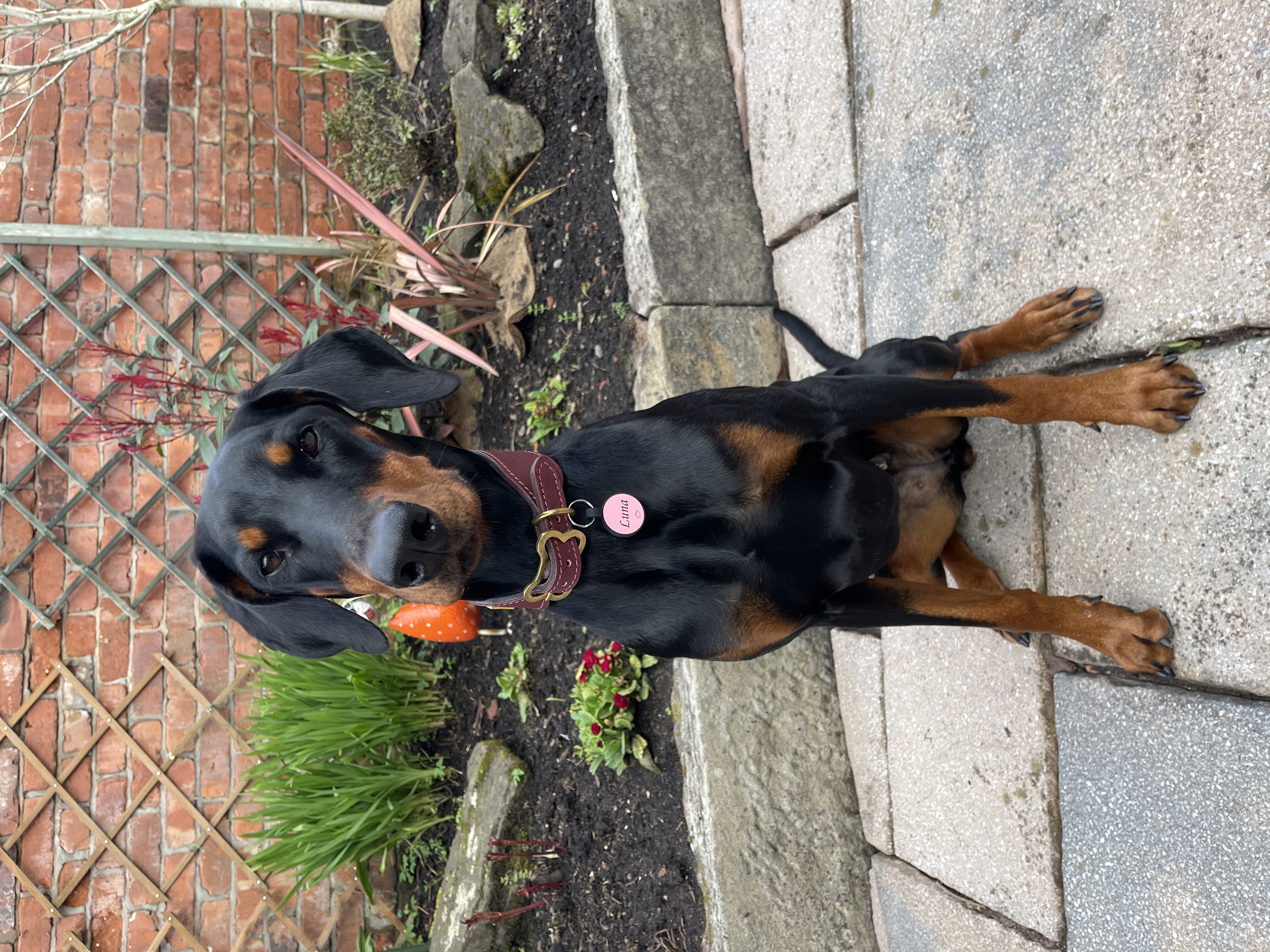
Dobermann Colours
Dobermann Pinschers should have a short, sleek and shiny coat. Like many breeds, Dobermanns can come in different colours. However, please note that many major kennel clubs do not accept some colours (they can officially be considered ‘faults’) and it is also important to note that some colours may be indicative of potential health issues.
We've added a little information on each colour below, but you'll find full explanations and guidance within the membership platform.
The four widely recognised colours for a Dobermann are:
Black and tan
Blue and tan
Red and tan
Fawn and tan
Black & Tan Dobermann
Black and tan
(or black rust) is the most common Dobermann colour.
It’s the colour most people associate with a Dobermann. (Cleo was brown and we got so many questions asking what breed she was! We've never had that with Luna so far, who is black & tan. Most people we come across know immediately she's a Dobermann).
This colour is said to be achieved when the Dobermann expresses the black gene but doesn’t have the dilute gene.
Since their coat is mainly black, you may have to be careful with them in direct sunlight and that they don’t get too hot as black just absorbs heat.


Red & Tan Dobermann
(or red rust) occurs when neither the dilute gene nor black gene are prevalent. It's the colour resulting from the red pigment being more dominant.
It is often referred to as 'brown' or 'chocolate' and after black and tan Dobermanns, this is the most common colour for a Dobermann.
Sometimes their tan/rust markings are a little harder to see than on the black coat colour, but they’re still there!
It is sometimes said that Dobermanns of this colour are more relaxed and friendlier to strangers, but this is not substantiated by research. Having said that, it is interesting as our Cleo (brown) was definitely more accepting and tolerant of strangers than Luna is (black). They're both crazy though!
Blue & Tan Dobermann
(or blue rust) is the colour achieved when the dog has the black gene along with the dilute gene.
It’s a grey colour which looks almost blue and is a dilute of the black gene. Generally, Dobermanns that are not black are seen as blue. The colour can vary from charcoal to a silvery colour.
In the UK particularly, you don’t see so many Dobermann’s of this colour (in the UK it’s mainly black or brown). This is possibly because European kennel clubs do not include blue as part of their breeding standard for Dobermanns and therefore are simply bred less. However, the American Kennel Club does recognise this colour.
Dobermanns with blue coats can suffer more with skin infections/issues and the dilute colours of Dobermanns can be prone to colour dilution alopecia. This is where the dog is born with a normal coat but as they get older, the hair becomes brittle and can lead to large bald patches.


Fawn & Tan Dobermann
(or Fawn (Isabella) and rust) is the final recognised coat colour. This coat is where a recessive black gene and a dominant dilute gene occurs, producing a coat called fawn. It’s a dilute of the red gene. It is sometimes called ‘Isabella’.
The coat appears to be brown but will be much lighter than the coat of a red and tan dog. The American Kennel Club will accept this as a breed standard, however, the European dog shows will not.
This colour may have higher incidents of skin rashes/concerns that the other dilute varieties. As with the blue, the Isabella can suffer from colour dilution alopecia. This is where the dog is born with a normal coat but as they get older, the hair becomes brittle and can lead to large bald patches.
The Isabella is said to have received its name from the Spanish Princess, Isabella, daughter of King Phillip ll.
Albino or White Dobermann
White (or partial albino) Dobermanns are actively discouraged.
White Dobermanns can look very beautiful, but people tend to stay away from them due to all the health issues they can encounter. White dogs generally (not just Dobermanns) can suffer more health issues than other, ‘coloured’ versions.
This is because they produce less pigment (melanin - which gives the eyes, skin, hair its colour), meaning they are more susceptible to a wide range of health problems such as skin issues, skin cancer, cracked skin and photosensitivity causing poor eyesight.
We share more information on this in the membership.


Black Dobermann
Dogs that have no red pigment are completely black which is a condition called melanism (so it is missing any red pigment). It's very rare to see what looks like an all-black Dobermann.
"
Joining this Dobermann membership has been a game-changer for me! The community is so welcoming, and it's been incredible sharing stories, asking questions, and learning from other passionate Dobermann owners. The support and insights have made my journey as a Dobermann parent even more rewarding. Highly recommend joining for all fellow Dobermann enthusiasts!
- MARY STANLEY
Joining this Dobermann membership has been a game-changer for me! The community is so welcoming, and it's been incredible sharing stories, asking questions, and learning from other passionate Dobermann owners. The support and insights have made my journey as a Dobermann parent even more rewarding. Highly recommend joining for all fellow Dobermann enthusiasts!
- MARY STANLEY
What to know before you buy or rehome a Dobermann
These large, energetic dogs need lots of your time. Time to train them, exercise them, snuggle with them. They are known as ‘velcro’ dogs and love nothing more than to be by your side. They can make the most gorgeous, fun, loving companions but there are some serious considerations you need to make before buying or rescuing a Dobermann:
Time Investment and Excercise
Dobermanns need a lot of time investment. If you are getting one as a puppy they need to learn everything from scratch and if you’re getting a rescue, they may well be scared (after all, they’ve been taken from a home to kennels so will be very unsure of what’s happening to them), there may well be learned bad behaviours they’ve picked up that need undoing with training and more – so both options will need a lot of your time and dedication.
As adults, they are large, active dogs and need a decent amount of exercise (if you don’t exercise them enough, you risk them becoming destructive through boredom or developing other undesirable traits like constant barking and other bad behaviours).
I’ve seen 2+ hours exercise a day recommended. I personally don’t think you have to do 2 hours walking etc every day (in fact, with large breeds, owners can often over-walk their dogs causing arthritis etc later down the line). It is especially important not to over walk puppies (please see our puppy section in the membership for more information on this as it’s incredibly important not to over exercise puppies). You also have to remember that if you do several miles with your Dobermann every day, you’re effectively creating an athlete who is going to need that much exercise all the time going forward!
General dog training and brain training are incredibly important, so doggy puzzles, hiding treats round the room or garden and letting them smell them out – it’s said that 15 minutes of brain training is as tiring as an hour walk, so mix it up! It's not just all about walking your pooch!
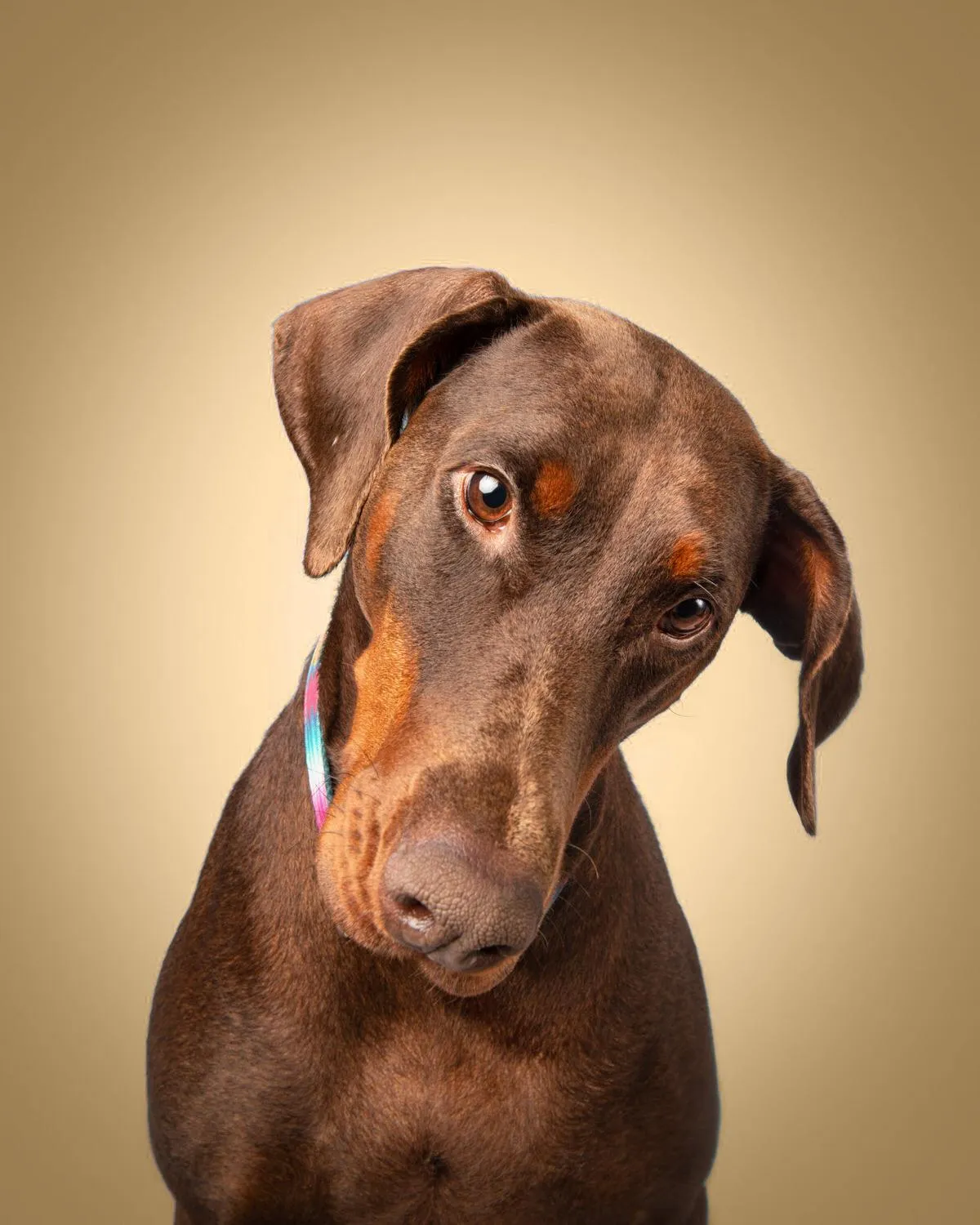
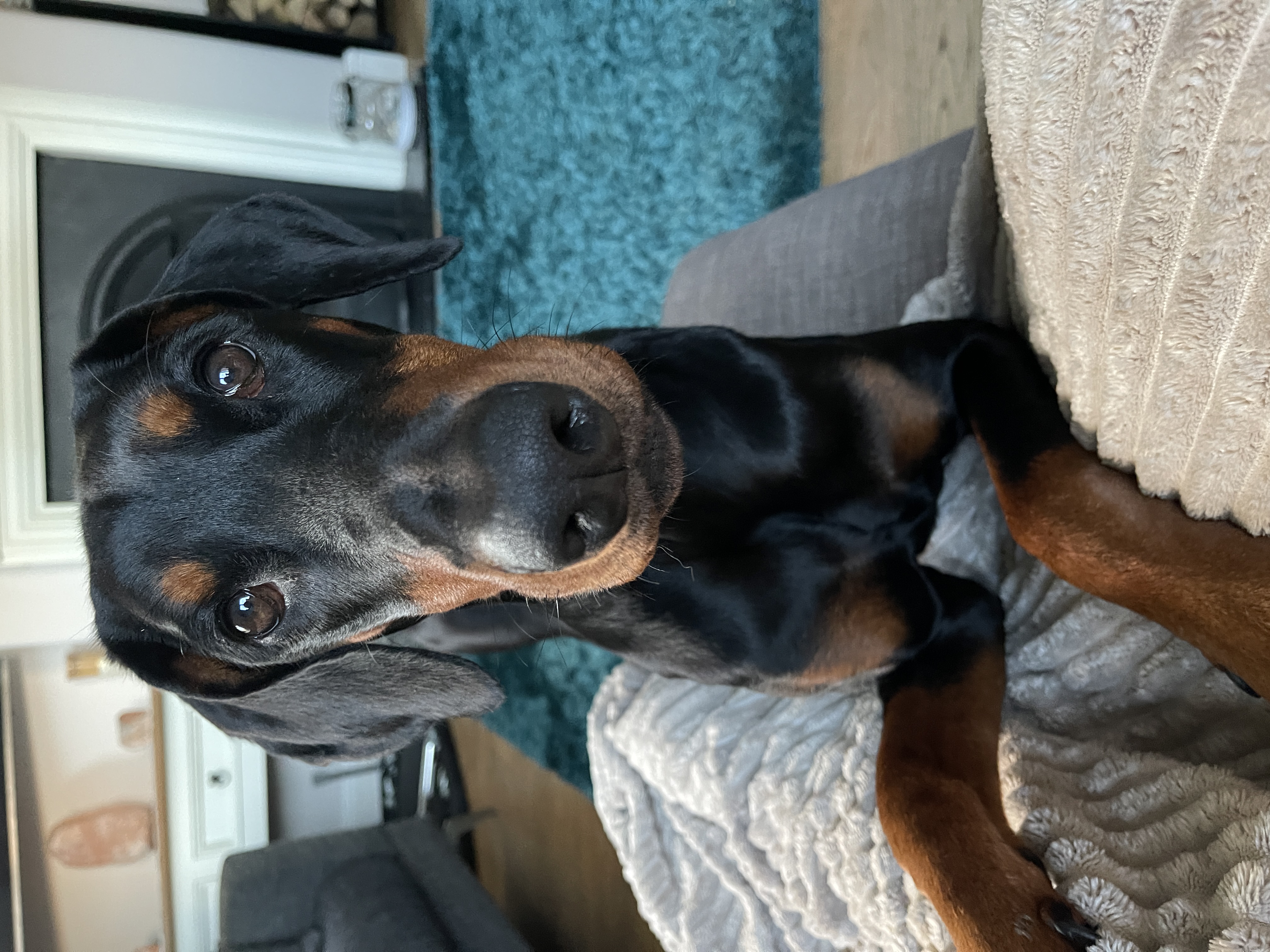
Puppy Classes / Dog Training
I personally think this is so, so important. Having had both of ours from puppies, I learnt sooo much through going to regular puppy classes. It also helps the dog socialise and start to learn it’s puppy manners.
It’s been great for us because as the dog grows, they’ll grow out of certain behaviours and start doing other things, so having that expertise and guidance all the way through has been invaluable for us. We’re still doing training and Luna’s nearly 2 years old – it’s just part of our weekly routine.
It's also a good thing in that Dobermann’s can unfortunately have a certain stereotype, so if anything were to happen, it’s important to be able to demonstrate that you’re a responsible dog owner and that the dog is well trained. Both of ours trained towards the Kennel Club certifications (there’s Foundation Level, Bronze, Silver and Gold) and as well as having the comfort that we’re training the dog as well as we can, it’s also fun for them and gets their brains working.
As they grow older, they can also get into things like agility training, scent training, Canicross (cross training with your dog).
These activities also help strengthen the bond between dog and owner as well as tiring the dog out!
Socialisation
Dobermann puppies need to be well socialised from an early age. As a large dog, and the breed they are, there’s always going to be certain people who stereotype the dog and so it’s really important for any Dobermann owner in particular, that their dog is well trained and well socialised.
This means behaving with other dogs and when they come into contact with other people. Make sure you can control your dog. Don’t let them off the lead in public places unless they have really good recall. Be responsible when coming into contact with strangers. Dobermann’s can often be wary of strangers, so create boundaries in terms of letting people approach them if they don’t like it. We had to do that with Luna, she just doesn’t like strangers coming to pet her (whereas Cleo wasn’t bothered at all), so we’ve had to say no to people asking to stroke her until she grows out of it and/or is comfortable with it. Be guided by your dog.
The earlier you can get them used to different environments, different people, different dogs, the better. Not all, but a lot of reactivity is because they are scared (and actually my experience is that Dobermanns are quite scaredy cats in a lot of ways!) or that they’re trying to protect you – our job as owners is to make the dog feel that we’re in control and don’t need protecting.
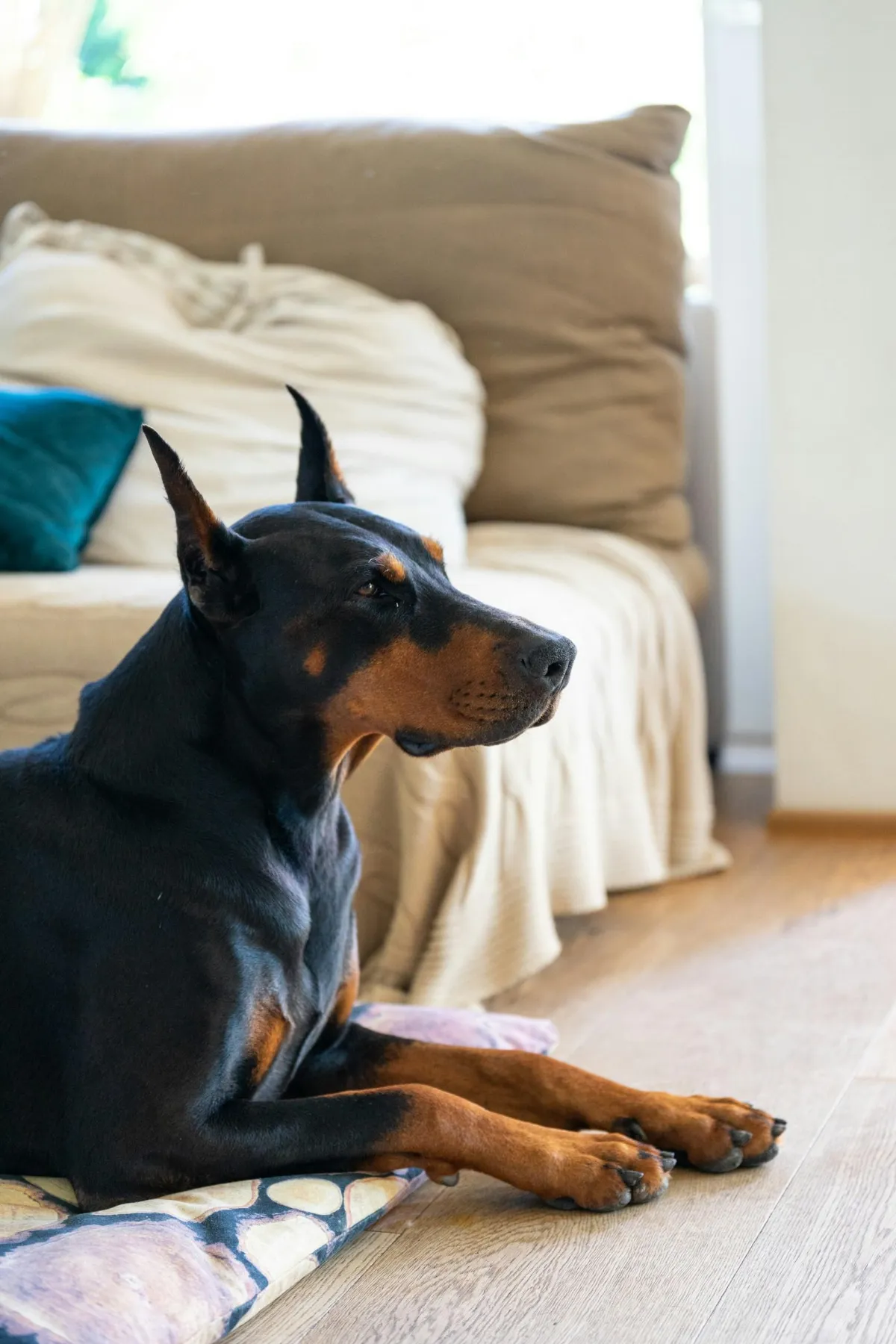
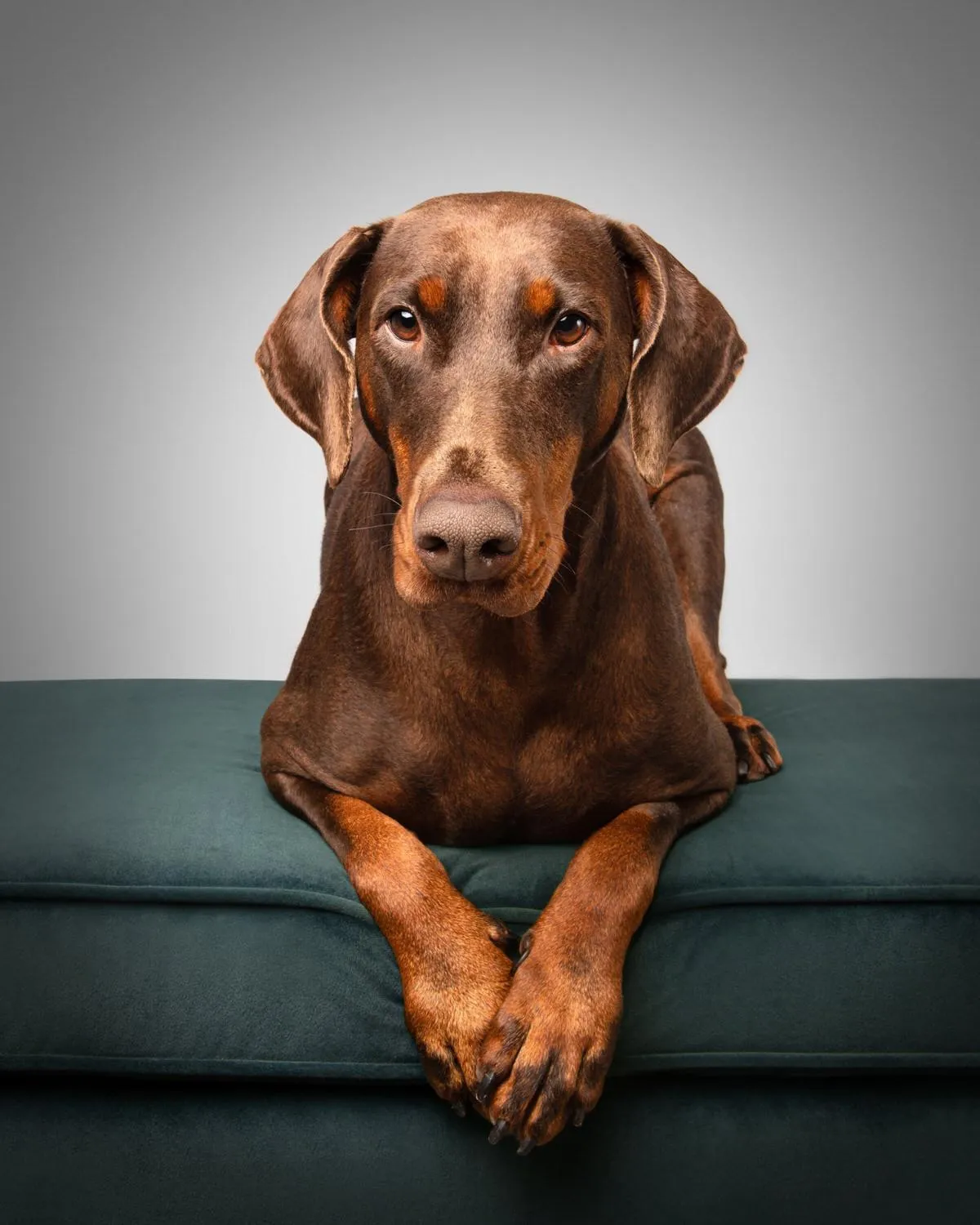
Separation Anxiety
Dobermanns are loving, loyal obedient dogs and want to be with you all the time. Known as ‘velcro’ dogs, they love nothing more than following you everywhere you go – even to the bathroom if you let them! Because they love their owners so much, they often don’t do well when left alone for long periods of time.
Some Dobermanns will feel this more than others. Training from an early age is key. As puppies, put them in their crate regularly to sleep and build up time away from them so they get used to it (see our puppy section in the membership for more information on this).
Reputable Breeder
Please do your research and get your puppy from a reputable breeder. Always meet the puppy’s mum and check temperament etc. Ask LOTS of questions. There’s so much information on this site and in the membership about what to look for and why research is so important – please do read everything!
Lucy’s law is now in place in the UK, which dictates that new puppies must be bought directly from a breeder or adopted from a rescue. Third party sellers are now illegal (this is to try and reduce puppy farming).
Cost
Sometimes people don’t think of the costs of owning a dog. It can be expensive! Firstly, there’s the cost of the actual dog/puppy. A pedigree dog can cost several thousand £. Rehoming a dog is a cheaper option but there will still be a cost attached.
Larger dogs eat more for a start, which can impact your purse! As with humans, aim to feed the best quality food you can, to try and prevent health issues arising down the line. As well as food, there’s the cost of insurance and what happens if your dog’s medical bills go over that insurance? Could you afford its medical care? There’s also the cost of annual vaccinations, spaying/neutering a dog, regular worm/flea treatments to consider.
There may also be the cost of day-care or dog walkers if required. The cost of toys, beds, leads, harnesses, training… it actually does add up pretty quickly. When you go on holidays, do you take the dog with you? (So you’ll need to research dog friendly places) or it’s the cost of home boarding or kennels, something else to factor in.
Make sure you’ve properly budgeted for welcoming a dog into your life.
Suitable Home
Do you have a suitable home to keep a Dobermann? Dobermanns are big dogs and need a suitable space. Space outside to toilet etc, space to sleep/put a dog bed and so on. All dogs will bark, some more than others, so what are your neighbours like? Dobermanns are very alert and will bark at noises, people passing by etc so will that affect anything?

Save time, money and effort today!
Owning a Dobermann can be challenging, time-consuming, tricky (and expensive if you get it wrong!)
Why take the risk?
Save time, money and effort by joining our membership and access education articles, training material, our private community and more!
In addition to our resource libraries, we have a whole host of video content to help you learn (and refresh) about owning a Dobermann. We’ve got years of experience of owning Dobermanns, we’ve collaborated with other experts, we’re trusted, and we want to help you ace being a Dobermann owner. Why go anywhere else?!
Are Dobermanns the breed best suited to you?
There’s a lot of information out there that says Dobermanns are best suited to experienced dog owners and aren’t great as a first-time dog. I do get it, as Dobermanns do take a lot of time and effort and if you just want a dog that’s going to laze all day on the sofa and need minimum input, then a Dobermann definitely is not for you.
It’s important to really consider this because young Dobermanns in particular are challenging and many end up in rescue centres because people just can’t, or don’t want to, put in the level of work in that’s needed with a Dobermann, so please do read all the information you can and really consider if you can offer a Dobermann the time, attention and investment that they really need.
Having said all that, we had a Dobermann as our first ever dog and now have another one since and have never looked back (but we did do our research and we both work from home so we’re around for our dog a lot of the time).
I personally think it just depends on you, your circumstances, how active you are and how much time you can spend with your dog. Those are really the key things to success with a Dobermann!
I think there are a lot of easier breeds to have; Dobermanns will challenge you, they will drive you mad, make you want to cry at times because they are so stubborn and strong minded but, if you have the time to invest, you’re fairly resilient and you’re consistent with boundaries, then you will have the best, most loving dog ever!
With both of ours, the first 18 months were the most challenging and then they really start to settle after that (as long as you’ve done the work with them). They are clumsy, they are quite nippy and mouthy as they teeth (think baby raptor), they jump up a lot and can scratch as they have pretty thick nails. You probably won’t wear white clothes for a really long time!
Most Dobermanns are pretty greedy and can counter surf if you’re not careful (we lost a chicken off the side once and a whole pizza!). Cleo also launched herself at my partner’s plate in a pub once just as the waitress was putting the food down and stole most of his fish from his fish and chips – she was marched straight to the car! Cleo in particular, was a real chancer when it came to food and they’re quick! You have to be on the ball with Dobermanns around. I've got many food-stealing stories from both our Dobies!
They can really pull on the lead until they learn not to, so again might not suit someone who isn’t reasonably strong (I couldn’t ask my mum to walk Luna for example, she’s just too strong and has too much energy so I’d be worried about Luna pulling her over or crashing into her or something!).
Male dogs in particular, can suffer from what’s known as Same Sex Aggression (SSA), particularly if not neutered, so if you already have a male dog, these are all considerations you must think about. Even two females can suffer from this.
The overall point is, do you have the time to dedicate to them? What are your family circumstances, can you manage another full-time toddler effectively?! Can you set the boundaries and be really strict with them? If yes, you’re on course to have the most loving companion ever! Yes, it’s hard at times but the good outweighs the bad and I’ve loved having Dobermanns and will have more in the future!
You have to decide if you’re up for the challenge and if you’ve really got the time to dedicate to them. Dobermanns need attention, they need training and to be able to use those intelligent minds, and they need lots of love and snuggles!
We go into all this (and more!) in so much more detail within the membership, so click here to join us today!
Dobermanns are not really a breed I’d recommend leaving all day on their own (although some might), I’ve seen many a chewed up sofa (or worse) from those that do. We’re lucky in that we both work from home, so our Dobermanns have never been left that long but even when we do, 3-4 hours is normally the max I’d leave them for. Luckily, to date, ours have never chewed up cushions or floors or anything else but they are a breed that absolutely can get destructive if they get bored or separated from their owners for too long.
If you do have to work at the office (for example), consider doggy day care or perhaps a dog walker coming to the house to walk your pooch so that they’re not sat on their own all day. People have mixed views on doggy day care, and I think again, you have to do your research. There are some day cares that just try and take as many dogs as possible and it’s all a bit of a free for all when they’re in there. There are others that take a certain number of dogs and while they’re there, they will do dog training with them, you’ll get pupdates and reports back and it’s all a lot more controlled.
Our Cleo went to day care a couple of days a week and absolutely loved it from the start – she couldn’t wait to get in there. Never looked back at us – straight in there! It meant we had a couple of free days to do jobs etc. Luna goes 2 x mornings a week and didn’t love it at first (bit of separation anxiety as she’s so bonded to us) but now she bounds in there and I love seeing all the pics of her playing with other dogs. Again, it helps them socialise and I vetted both day-cares well before letting my dogs in either.
Read through the website, join the membership to learn even more and decide whether a Dobermann is the right dog for you!
FREE DOWNLOAD
Headline that hooks people in, gets them excited and makes them want to sign up.
© Copyright 2024 THE DOBERMANN CLUB - All rights reserved
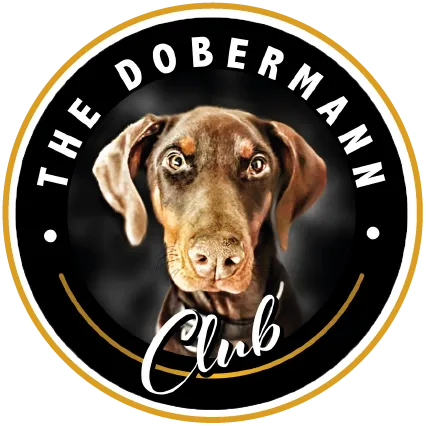

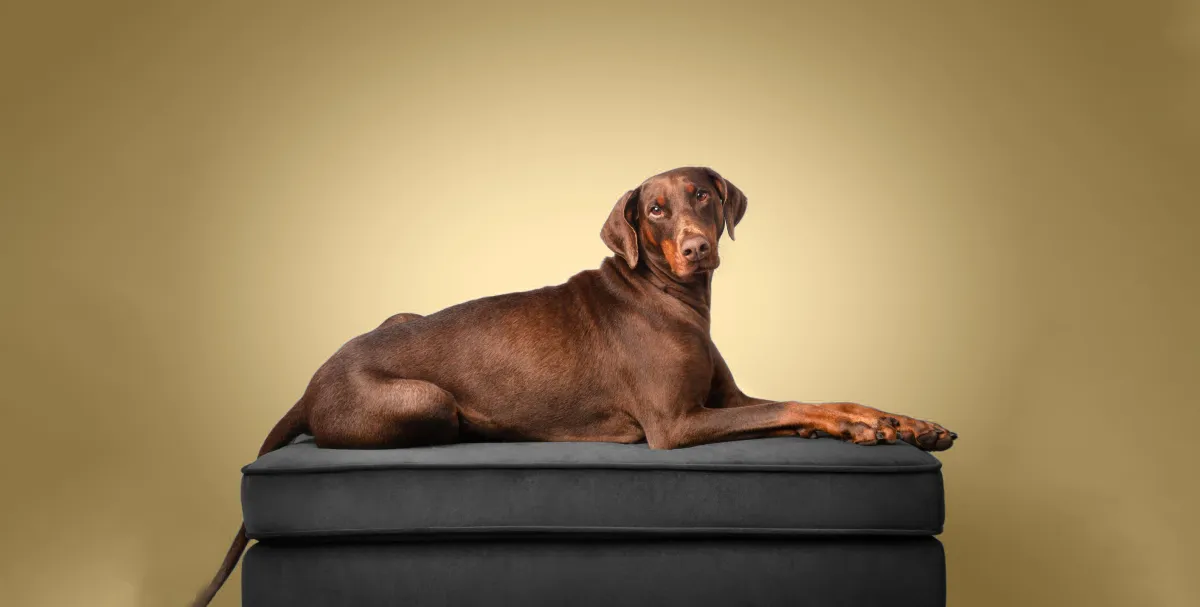

Instagram
TikTok
Facebook